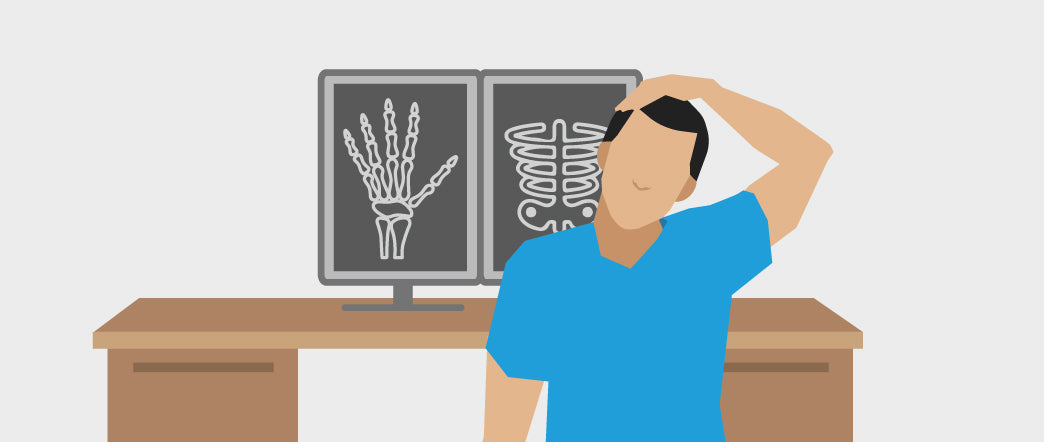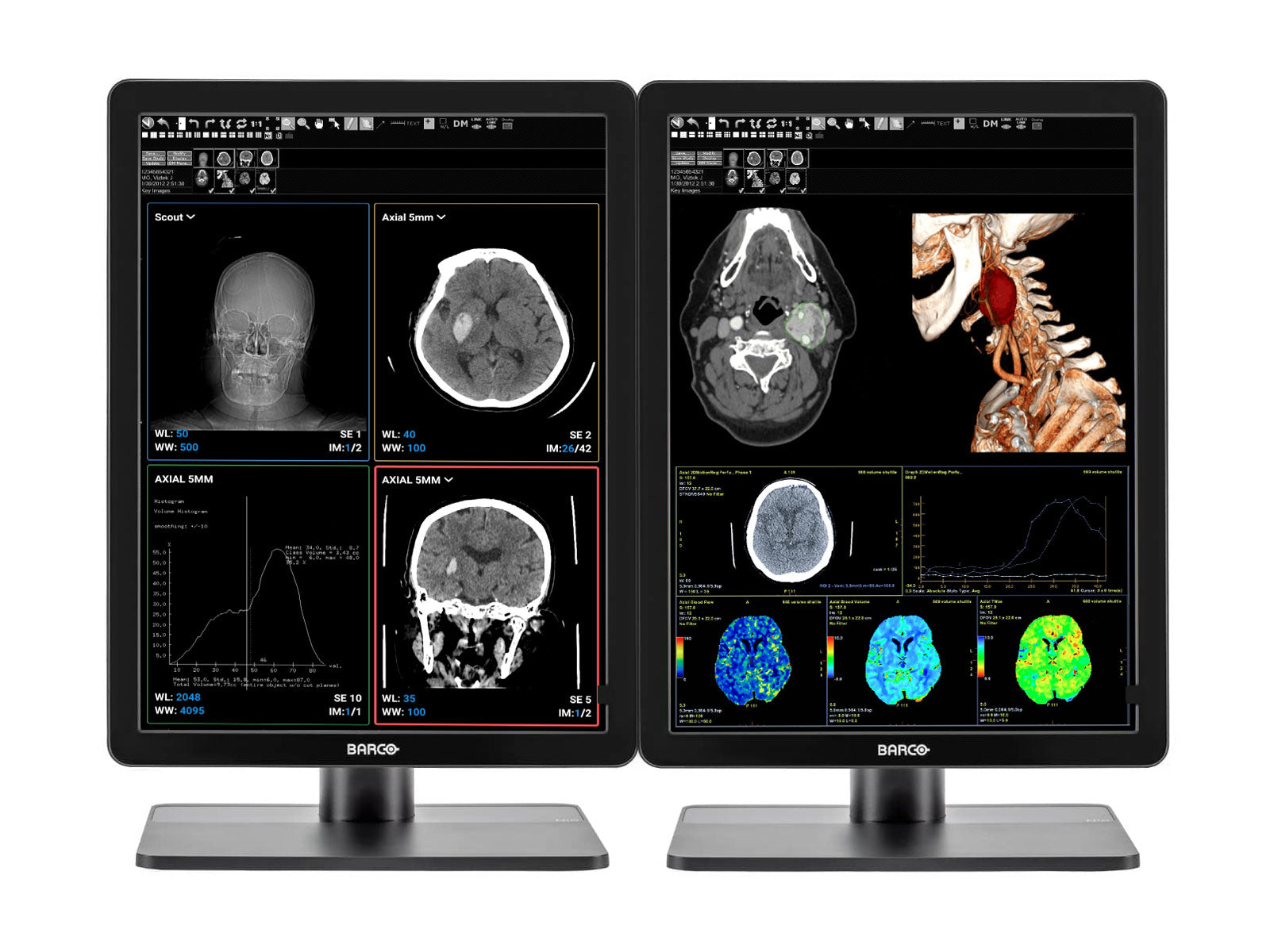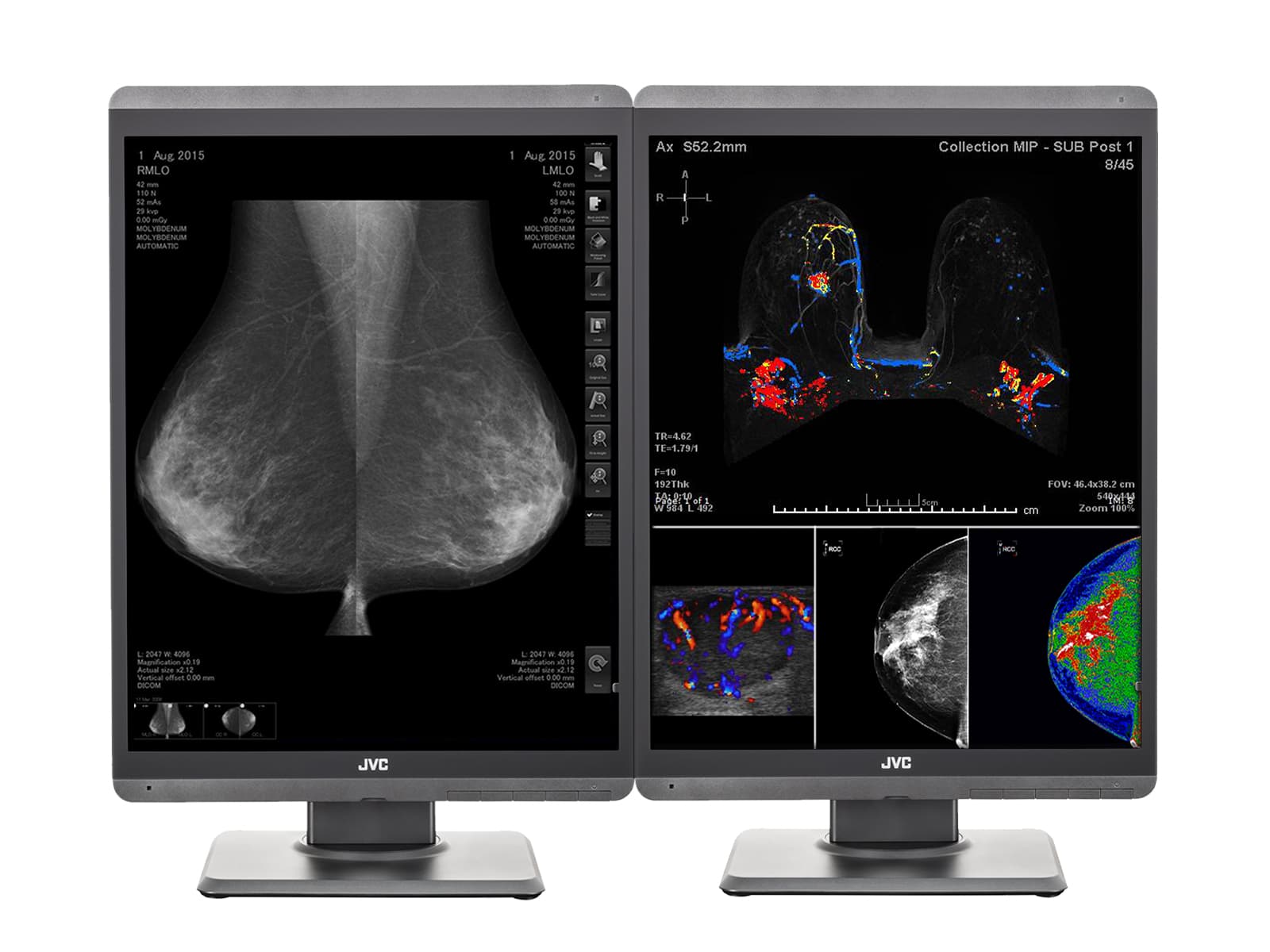Radiologists need a high concentration level to ensure they get everything right when reading images. As a radiologist, you sit in front of a medical monitor for hours every day, reading images. This can wreak havoc on your body. This is especially true if you stay in the same position for hours. Given the conditions radiologists work in, the lack of variation in movement can cause back pain, headaches, tension, and tightness in your back, neck, and shoulders.
There are ways to combat this sedentary dilemma for a Rad that, by its nature, requires prolonged screen time. Studies show that regular stretching can help reduce neck and shoulder pain. Plus, frequent breaks to stand and stretch increase productivity. Flexibility breaks allow your eyes to rest and your entire body to feel more comfortable.
The following are some stretches for radiologists when attempting to reduce prolonged sedentary time and stiffness. Hold each stretch for 10-15 seconds. Avoid any exercises that cause pain or discomfort.
Stretch 1: Chest Stretch
Radiologists spend most of their time stooped forward at their reading station, so taking regular breaks to stretch your chest and shoulders is one of the best exercises to alleviate back tension and help with sitting up straight.

How to:
In either a sitting or standing position, put your arms behind you and hold your hands together with your fingers interlaced. Then straighten your arms and slowly lift your hands a few inches, or until you can’t lift them anymore. You should feel a stretch in your chest. Hold this for stretch for 10-15 seconds. It’s recommended to avoid this move if you have shoulder problems.
Stretch 2: Shoulder Shrug
Reading images on a diagnostic monitor for long periods can cause shoulder and neck tension. The trapezius muscle is often tight with hunching because you don't notice how much extra weight your shoulders take on when typing or clicking away in front of a screen all day! Relieve tension from the shoulders and traps with shrugs.

How To:
Seated or standing, lift your shoulders towards your ears and squeeze them as far as possible for 1 to 2 seconds before relaxing and rolling your shoulders back and down to a resting position. Repeat this 8 to 10 times, then do the following again but roll the shoulders forward this time.
Stretch 3: Upper Back Stretch
While shoulder shrugs will help get the circulation going, this upper back move will stretch all the muscles between the shoulder blades, traps, and shoulders. After stimulating blood circulation from shoulder shrugs, perform this upper back move to stretch all of the back muscles between the shoulder blades and the traps and shoulders.

How To:
Either sitting or standing, straighten your arms and stretch them out in front of you, rotating the hands, so your palms face away from each other. Form a twist by simply moving your arms together until they cross, pressing your palms together once crossed. If twisting the arms is uncomfortable, you can just lace the fingers together. Now contract the abs, round the back as if curving over an imaginary ball, and relax the head down while keeping your arms stretched out in front of you. Hold this position for 10-30 seconds.
Stretch 4: Spinal Twist
Radiologists sit for long periods, which can cause the lower back to become tight and achy. Gently twisting the spine can help reduce that tension, but you don’t want to over-rotate this stretch: a little goes a long way.

How To:
Remain seated with feet flat on the floor. Contract the abs and slowly rotate the torso to the right. It may be helpful to leverage an armrest or the seat of a chair to deepen the stretch further. Remember your limits, and only twist as far as you comfortably can while keeping the back straight and hips square. Hold for 10 to 15 seconds. Repeat the stretch on the other side as well.
Stretch 5: Torso Stretch
Good posture is an essential part of maintaining a healthy back. Still, when you get lost in reading images, you may subconsciously slump back to a hunched position, causing unwanted backaches. With this easy move, you can prevent distracting back pain that helps stretch and loosen all the back, sides, and arms muscles.

How To:
Either sitting or standing, lace your fingers together and stretch your arms up and over your head, reaching toward the ceiling. Breathe deeply and stretch up as high as you can, feeling the back expand. Exhale while opening your arms and lowering them down. Repeat this stretch 8 to 10 times.
Stretch 6: Forearm Stretch
Forearms and wrists suffer a lot of wear from typing and clicking. This elementary move helps soothe the muscle tension and prevent repetitive soreness of the wrist and forearms.

How To:
Either seated or standing, stretch the right arm out with palms facing the floor. Press your left hand against the upper palm of your right hand and gently pull the fingers of your right hand towards you. You should feel a stretch in the forearm. Hold for 10 to 15 seconds, then repeat on the other hand.
Stretch 7: Neck Stretch
When working on a computer all day long, many of us drop our heads forward, putting extra tension on the neck. Heads can weigh up to 11 pounds, which can put an immense amount of stress on the relatively thin anatomy of the neck.
Weighing up to 11 pounds, the head can No Radiologist wants to feel the dreaded pangs of neck pain creeping in, especially when accompanied by headache and upper back tension. Neck stretches are great for relieving stress on your neck muscles and avoiding discomfort.

How To:
Remain seated for this stretch. Grab the side of your chair with the right hand and gently pull while tilting your head to the left. You should feel a stretch down the right side of the neck and shoulder. Hold this position for 10-30 seconds, then repeat on the other side.
Stretch 8: Hip Flexor Stretch
Even those with perfect posture can experience muscle tightness in the lower body due to sitting too much. We can understand how sitting causes tension by looking at the anatomy: the glutes stretch while the hip flexors are shortened when you sit. Stretching the hips alleviates tightness and gets you up and moving to offer some immediate relief.

How To:
Stand up and move the right leg back a few feet, bending the back knee like you’re doing a lunge. Lower both knees until you feel a stretch in the front of the right hip. Deepen the stretch by flexing the glutes of the back leg. Hold for 10-30 seconds and repeat on the other side.
Stretch 9: Seated Hip Stretch
Release the tension of a long day with this simple hip stretch. The hips and glutes are home to a complex series of muscles, making this stretch an excellent choice for targeting several muscle groups.

How To:
In a seated position, cross the right ankle over the left knee and straighten the back, sitting up tall. Keep your back straight, and gently lean forward until you feel a stretch in the right glute and hip. Deepen the stretch further by pushing down on the right knee. Hold this position for 10-30 seconds, and repeat on the other side. Please remember to avoid this move if it causes pain in the knees.
Stretch 10: Inner Thigh Stretch
Building on the previous stretch, this variation is geared towards the inner thighs, hips, and groin and targets unwanted lower body tightness.

How To:
Sitting down, position the legs wide, toes pointing out, and lean forward while resting your elbows on the thighs. Keep your spine straight and abs contracted, and gently lean forward while pushing the thighs out with your elbows until you feel a stretch in the inner thighs. Hold for 10-30 seconds and repeat as many times as is needed.






